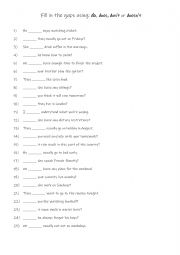
|
Fill in the gaps using: do, does, don�t or doesn�t
Students read and complete the sentences / questions using the correct form of auxiliary verb do. Answers are on page 2
Level: elementary
Age: 10-100
Type:
Downloads: 128
|
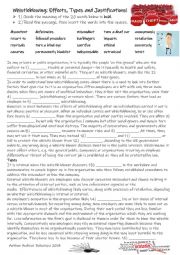
|
Whistleblowing: The Effects, Types and Justifications
850-Word reading article with a 20-word gap fill exercise about whistleblowing. It takes an in-depth look at why people do it, the ramifications for both the whistleblower and the organisation.This sheet is suitable for higher level B1 to C1 students of all ages. An answer sheet is included. For higher level students they could be put in groups to ...
Level: intermediate
Age: 12-100
Type: worksheet
Downloads: 1891
|
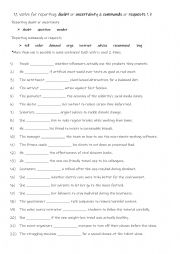
|
11 verbs for reporting doubt or uncertainty & commands or requests 1b
First, students need to familiarise themselves with the 11 verbs and check their meaning and use. Then they read the sentences to see which verb is needed to complete the sentence. Each verb is used 2 times! Answers on page 2
Level: elementary
Age: 9-100
Type:
Downloads: 108
|
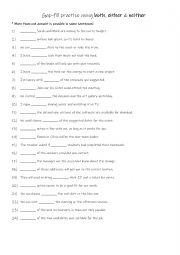
|
A2-B1 Gap-fill practise using both, either & neither
Students familiarise themselves with the determiners / conjunctions and their usage. Then they read the sentences to see which word is required to complete the gap-fill. Each determiner / conjunction is used 8 times. Answers on page 2.
Level: elementary
Age: 9-100
Type:
Downloads: 110
|
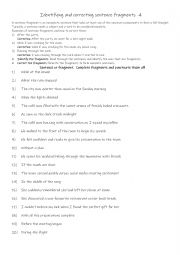
|
Identifying and correcting sentence fragments 4
First, students need to familiarise themselves with identifying and correcting sentence fragments. Then they read the sentences to identify and correct the issue and punctuate all of the sentences Answers on page 2.
Level: elementary
Age: 8-100
Type:
Downloads: 131
|
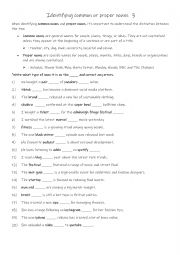
|
Identifying common or proper nouns 3
First, students need to familiarise themselves with the 2 types of nouns. Then they read the sentences to identify and use the correct punctuation for all of the sentences. Answers on page 2
Level: elementary
Age: 8-100
Type:
Downloads: 111
|
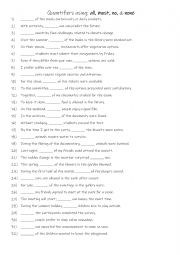
|
A2-B1 Quantifiers using: all, most, no, & none
First students familiarise themselves with the 4 quantifiers and their use. Then they read the sentences to work out which quantifier is required to complete the sentence. Answers on page 2.
Level: intermediate
Age: 9-100
Type:
Downloads: 112
|
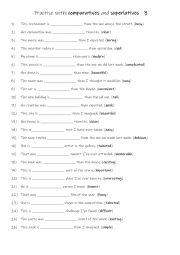
|
A1+-A2 Practise with comparatives and superlatives 3
Students read the sentence and complete the sentence with the correct form of the given adjective in (). Each form is used 13 times! Answers on page 2.
Level: elementary
Age: 8-100
Type:
Downloads: 102
|
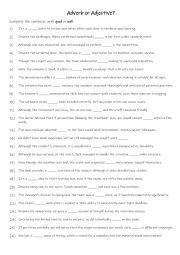
|
B1 adjective or adverb practise using: good or well
Students read the sentences to see if an adjective or an adverb is needed to complete the sentence. 13 sentences require an adjective and 13 sentences require and adverb to complete the sentences. Answers on page 2.
Level: intermediate
Age: 10-100
Type: worksheet
Downloads: 119
|
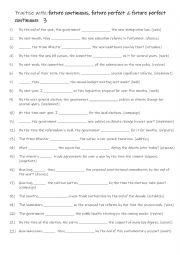
|
B1-B2 Practise with future continuous, future perfect & future perfect continuous 3
Students should learn the future continuous, future perfect, and future perfect continuous tenses to express a variety of future actions and events more clearly. The future continuous describes ongoing actions at a specific future time, the future perfect indicates actions that will be completed before a certain future point, and the future perfect...
Level: intermediate
Age: 10-100
Type: worksheet
Downloads: 135
|












